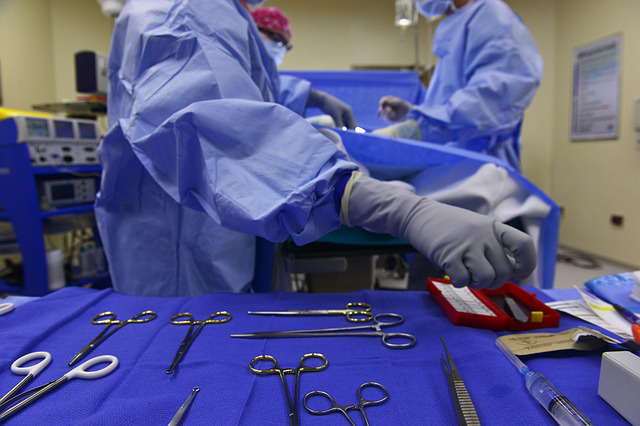As we see more widespread acceptance for robots in general, we'll likely see even more automation in health care - but some of it is already here.
How Robots Are Changing the Way We Do Surgery
Kayla Matthews | Productivity Bytes
We already see robots on the modern factory production line. They fill some of the more menial, laborious and repetitive tasks on the floor — and they often do so with more speed and efficiency than their human counterparts.
Industrial automation has set the stage for advanced robotics in other areas besides manufacturing and production. Health care experts hope to see a similar push for increased automation in their sector — and they might be closer to realizing that goal than they imagine.

1. Improved Precision and Accuracy
Out of all the ways robotics can improve modern surgery, manufacturers currently tout their ability to improve the precision and accuracy of operations. Miniscule, next-gen robots are also useful for performing actions in small organs, such as the human eye.
The Robotic Retinal Dissection Device — or R2D2 — is one such robot. As the name implies, it's specifically aimed at one purpose: to perform advanced surgery within the human retina. The robot's arm is small enough to fit into an incision that is approximately a hundredth of a millimeter in thickness.
The R2D2 is the first robot to operate within the human eye, and it's already correcting issues past generations wouldn't be able to address, due to the high level of precision required.
2. Greater Consistency Across Operations
Robots are more consistent than humans when performing operations, as a demonstration of the Smart Tissue Autonomous Robot (STAR) recently proved. Not only did it insert stitches into a small intestine — in this case, a pig's — but it did so with greater consistency and quality than human surgeons who took part in the same demonstration.
STAR completed the procedure according to its own, pre-programmed artificial intelligence that mandated the tool selection and the movements of the machine. It performed without any human intervention or assistance in 60 percent of the demonstration's tests.
Although the machine is proven to work with improved consistency over humans, most medical experts don’t feel threatened by the breakthrough. Instead, they're optimistic at the opportunity to supplement their success via next-gen technology. For example, when surgical smoke makes it hard for humans to see, robots can complete the required processes without losing any significant time.
3. Less Intrusive and Destructive
Most surgeries are highly intrusive processes that often result in direct and long-term damage to surrounding tissues or organs. The severity of this damage varies. In most cases, it's as insignificant as minor scarring around the site. In extreme cases, it could result in unnecessary blood loss or the onset of new medical issues altogether.
Robot-performed operations are, generally speaking, much less intrusive than those completed by human surgeons. Even the steadiest hand could have a muscle twitch or miss its target. Robotic devices aren't prone to such mistakes.
The Flex Robotic System is one such example. Used at many facilities, including the University of Pittsburgh Medical Center, the hose-like robot works itself into tight or cramped spaces within the human body while minimizing damage to blood vessels and the surrounding soft tissue.
4. Increased Mobility and Freedom of Movement
We're also in the earliest phases of exoskeleton assistance. Popular in sci-fi novels and films, exoskeleton devices increase the wearer's strength while making their physical movements quicker and easier. Exoskeleton equipment — which a 3D printer could produce — helps stroke victims and those with limited mobility regain their freedom of movement.
Although current exoskeleton devices are bulky and unsightly, they offer tremendous functionality. They also provide the benefit of customization, so most systems can be custom-built for each patient to achieve maximum biocompatibility.
Embracing Robots in the Health Care Field
While we already have a push for greater integration of technology in many professional sectors, these often don't extend to the health care field. After all, many humans can't trust a robot to assemble common consumer goods — there's no way they'll let them perform surgery on their body.
As we see more widespread acceptance for robots in general, we'll likely see even more automation in health care — but some of it is already here.
The content & opinions in this article are the author’s and do not necessarily represent the views of RoboticsTomorrow
Featured Product

